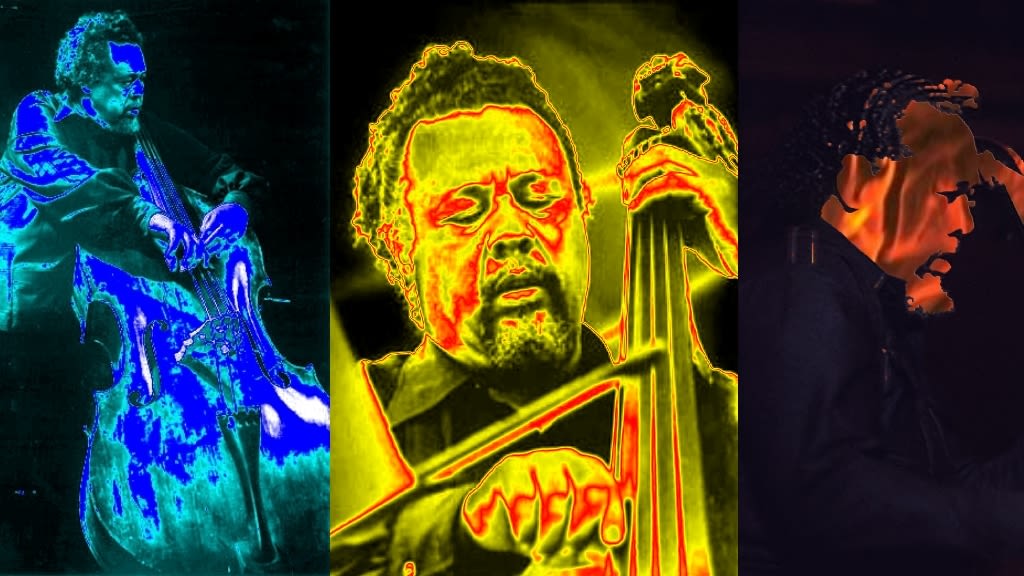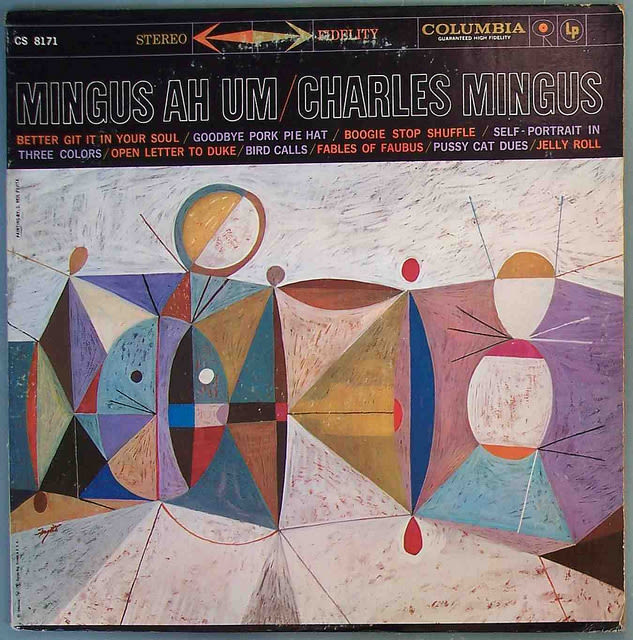If You Care About Jazz in Houston, Don't Miss Charles Mingus Live

Charles Mingus doing work on the upright bass.
Image: Broderick / Flickr
Fast double bass notes all alone, pulled up to a bluesy minor third before bending down a half step—this is the first thing you hear on the late Charles Mingus’ iconic 1959 album Mingus Ah Um before it breaks into a quick festival of sound that will get stuck in your head, guaranteed.
Mingus Ah Um came out alongside other foundational jazz albums that year—Dave Brubeck’s Time Out and Miles Davis’ Kind of Blue, to name a couple big players. But listen to the opening number on each of these albums, and you’ll know you’re dealing with very different jazz creatures. And you’ll also get the impression pretty quickly that Mingus is doing something altogether different.
Another way to put it is that Mingus was unusual. Friends and critics alike commonly described him using adjectives like “mercurial” and “volatile.” As a bandleader, Mingus looked to the soloists, fostering free-tempo, rubato (stealing time), collective improvisation and static mode-based solos, and he dictated lines instead of notating them for his band members. Essentially, he moved jazz out of bebop to a new realm of expression.

Image: CHRIS DRUMM / flickr
This Sunday, in a rare performance presented by H-Town Arts, you can experience the album live from start to finish (with an intermission timed for the record flip) in the intimate space of Sparrow and the Nest as part of the Nest House Concert Series.
“We had been thinking of doing full-album concerts from beginning to end,” pianist Andrew Lienhard recalls. “Except for the actual improvisation, everything is the same.”
When Lienhard approached Ryan Gabbart, trombonist and musical director, with the idea, Gabbart says Mingus Ah Um was the first album he thought of.
“It’s the first record that I found as a 17 or 18-year-old that featured a trombone,” Gabbart says. “He’s a good entry point for a lot of folks, even if you don’t understand jazz…the titles are evocative of a lot of personal information, things from the era. This album in particular has that in pretty much every one of the songs.”
They chose Mingus Ah Um not only because of its weight in the jazz canon and its wide appeal (seriously go listen to it—you’ll love it), but because there just aren’t that many chances to play it, or hear anyone else play it.
“You don’t hear music from this album performed at all,” Lienhard says. “The music is pretty challenging.”
Before trying to run Mingus’ gauntlet, someone had to transcribe the entire album—a meticulous job Gabbart humbly admits to only after Lienhard brings it up.
“He’s overselling me a little,” Gabbart says. “It took about a month. Having good charts is the first step, and then the second is hiring the right personnel … a good band of friends.”
Alongside Gabbart and Lienhard, alto-sax player Dean Moore, tenor-sax player Ernesto Vega, bass player Thomas Helton, and drummer Joe Slezak took up the call. And the performance promises to be a multi-dimensional Mingus experience with a lecture, a detailed handout about the album, and a video that will play behind the musicians.
The album moves through a range of jazz history. Songs like “Open Letter to Duke,” and “Jelly Roll” are open tributes to Duke Ellington and Ferdinand Joseph LaMothe (otherwise known as Jelly Roll Morton). “Goodbye Porky Pie Hat” nods at Lester Young. The second song of the album, “Porky Pie” is probably also the best known thanks to Joni Mitchell’s 1979 rendition. Mellow saxophone, later doubled in octaves, intones one of the most melancholy phrases you’ll ever come up against—sadness rises to hope, only to fade to utter heartache. It’s a drastic change from the opening dazzle of “Better Git It in Your Soul,” and you should be ready to sink into it before being pulled back up by the fast beats of “Boogie Stop Shuffle,” which comes quick on its heels. This album may not have everything, but it comes close in terms of human emotion.
“I’ve been listening to Mingus’ music and studying it, (but) it’s rare that you get to play it fully formed,” Gabbart says. “It’s just something that I’ve dreamed of doing since I first discovered his music.”
Mingus Ah Um House Concert, Sunday, August 13, at 6 p.m. Tickets $25. Sparrow and the Nest, 802 Ralfallen. 713-202-7392. More info at sparrowandthenest.com.




